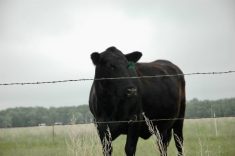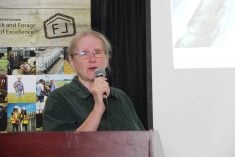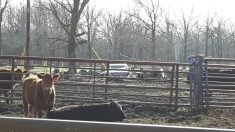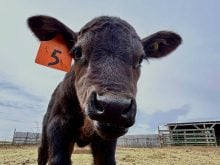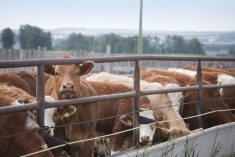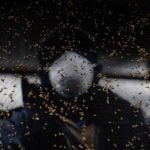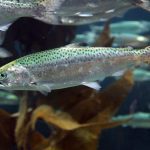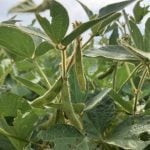Anyone reading this column who has been a teenager or has raised one can appreciate how challenging and interesting those years can be.
Even good teenagers can be expensive. In our beef cattle production systems, the teenage role is filled by replacement heifers, and like teenagers a bit of understanding about the changes they are going through over those years can help improve the outcomes when we deal with them.
Whether we appreciate it or not, cow depreciation is a massive expense in most cow-calf operations. In many cases, it ranks as one of the top three expenses. Depreciation does not occur in a linear fashion with replacement heifers. Because there is a big upfront cost in either purchase or development, there can be a subsequent large depreciation cost for heifers that leave the herd early in life.
Read Also
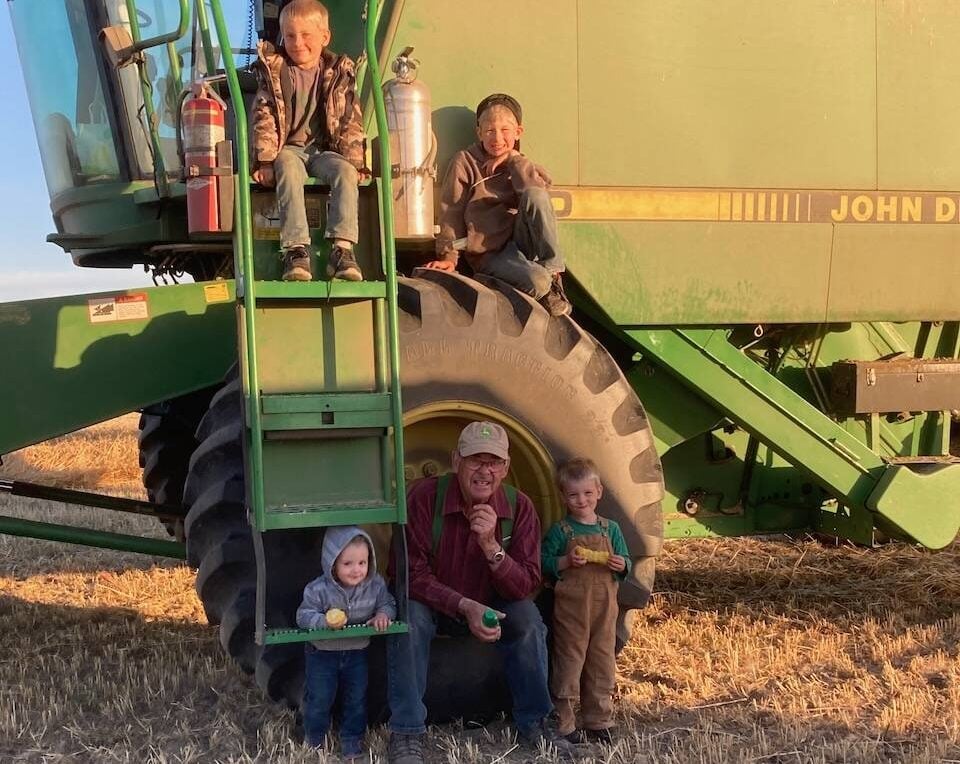
Harvest wraps up and fall work begins
At the Eppich famly ranch in western Saskatchewan, the fall harvest was successful with few breakdowns, cows and calves have been sorted and a new tractor has arrived
Understanding the basic physiology occurring over the roughly three-year time frame from heifer calf to second-calver can help us to manage this process, our expectations and the resulting cost to our operation. The first thing young heifers are going through is as basic as growth and puberty.
Estrus occurs based on a combination of age and weight/body condition. This means older heifers (those born in the first cycle) have a bit more time to reach the milestones required for ovulation and getting bred in the replacement program. If we expect our replacement heifers to calve at two years of age, they must be bred at 15 months of age.
If we look at a group of heifers born over the span of a 90-day calving season, when the oldest heifers are 15 months old, the youngest are 13 months and may not have even reached a physiological stage where estrus is possible. If we breed early to calve heifers ahead of the main cow herd, this may be exaggerated further. Heifers are less likely to be bred on their first ovulation than on subsequent ovulations, as the hormonal process of ovulation helps with reproductive organ development. For the best success, breeding heifers should be on their second or further ovulation by the time breeding season rolls around.
Traditional knowledge dictates that heifers should be roughly two-thirds of their mature size at first breeding. A lot of research indicates this is not necessarily true and that healthy heifers at 50 to 55 per cent of mature weight at breeding will perform as well and last as long in the cowherd as heifers exposed at a heavier weight range.
To put this in perspective, the two-thirds rule means that you expect an 850-pound breeding heifer to mature into a 1,300-pound cow. Managing to a lower ratio may allow us to reduce development costs and results in smaller mature size. Breeding success is higher when heifers are on a rising plane of nutrition through the breeding season.
If a heifer is not bred and but is still gaining weight over the summer, they are adding value and not taking a depreciation hit (market dependent). From a physiological perspective, a first- or second-trimester bred heifer does not take a lot of extra energy and basically just needs to keep growing and maturing. At this stage, the fetus is quite small and does not demand a lot of excess energy.
Most critical time
In the third trimester the heifer starts to have additional requirements as the fetus develops, her mammary system is starting to come to life and she continues to grow. This leads to the start of what’s likely the most critical time physiologically in her entire life — and is directly connected to the largest potential depreciation hit in a cow’s lifetime.
Firstly, the heifer must calve, and recover from that calving event. This includes basic repair of the reproductive tract. Even a normal unassisted birth will result in some trauma to that tract. However, a difficult birth may result in further damage that requires significantly more biological resources and time for the heifer to repair. Difficult births are one of the leading causes for heifers to fail at rebreeding. Additional physiological changes include milk production and raising a calf. More on that in a bit.
That first-calf heifer is also not yet at full mature size and still has some further growth of her own before she gets to that final mature size. Another interesting part of her development also occurs around the age of two. At roughly this stage of life, she replaces her incisors with a set of permanent incisors.
If our heifer calves at 24 months of age and we want her to calve again at three years old, she needs to rebreed at 27 months of age, or roughly 90 days post-partum. To obtain good conception rates, heifers should be happy, healthy and on a rising plane of nutrition. Physiologically, her body needs to tell her life is good, her nutritional needs are supported, her calf is supported and there are enough extra resources to support a pregnancy. This three-month time frame for rebreeding also roughly coincides with peak lactation, which can easily see a 20 to 30 per cent increase in nutrition requirements.
In a nutshell, physiologically we are asking that the first-calf heifer recover from calving, continue to grow, learn to be a mother, develop/maintain peak lactation, and rebreed while she may be between sets of teeth.
In a physiological context, it is readily apparent that it is much more difficult to get a first-calf heifer rebred than it is to breed a virgin heifer. It is also where we see the highest depreciation rates, as an open three-year-old generally has a massive value difference when compared to a bred three-year-old or a bred heifer. We also have not had enough calves from that female to cover the development costs or purchase price.
No matter how you slice it, teenagers can be challenging. Understanding this can help us in our operation to decide what extra support to provide to these cattle (or whether to provide extra support) or if we should own these young cattle in the first place or examine alternative replacement strategies.
If your ranch pregnancy checks or markets open cows, it may be worth tracking the percentage of first calf heifers that wind up on the truck heading into their third year. It may help you adjust management to reduce the depreciation costs associated with cows that take an early exit from the herd. Because the depreciation cost is so high, there may be cheaper alternatives providing further support to that specific set of animals as they grow through those teenage years.



